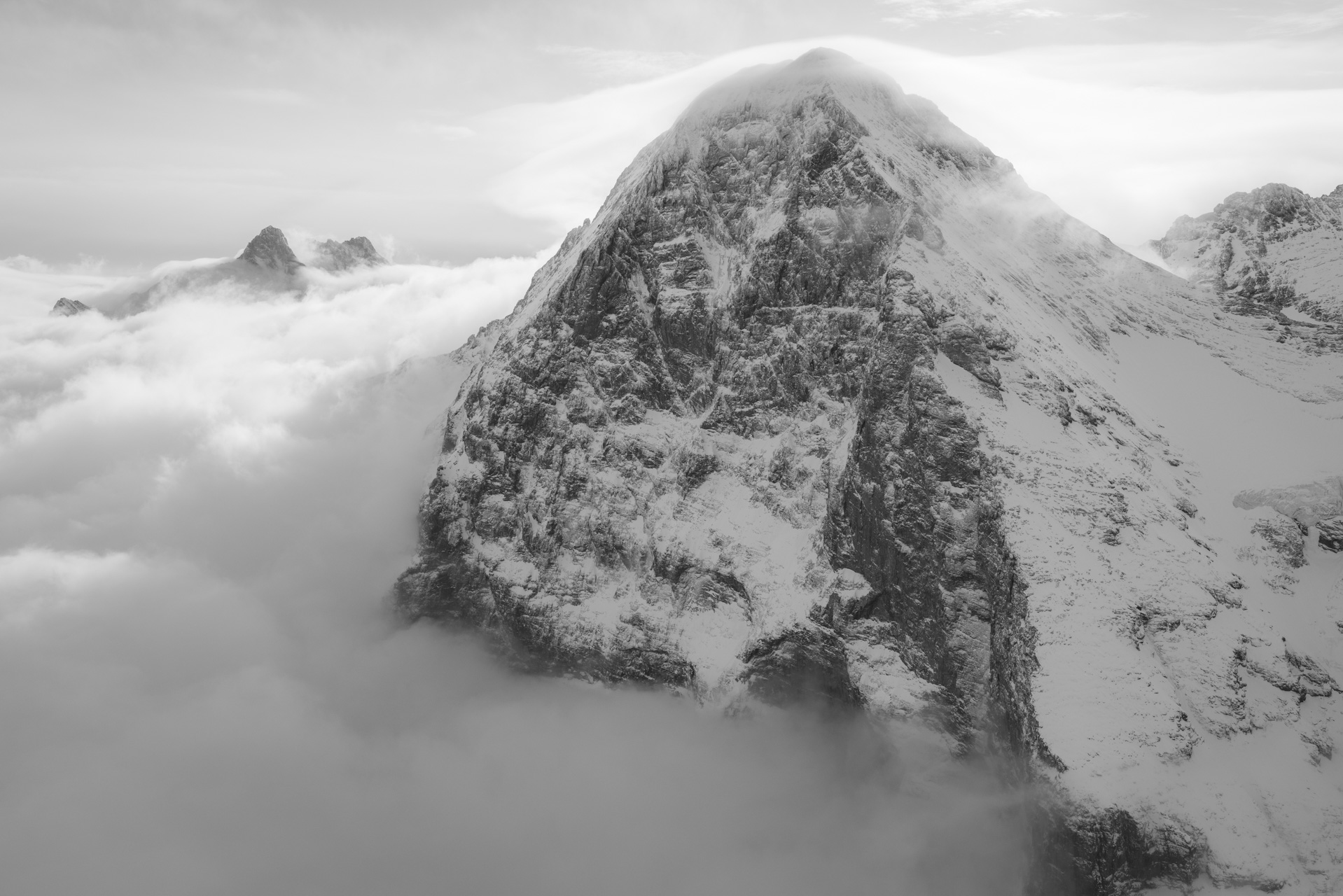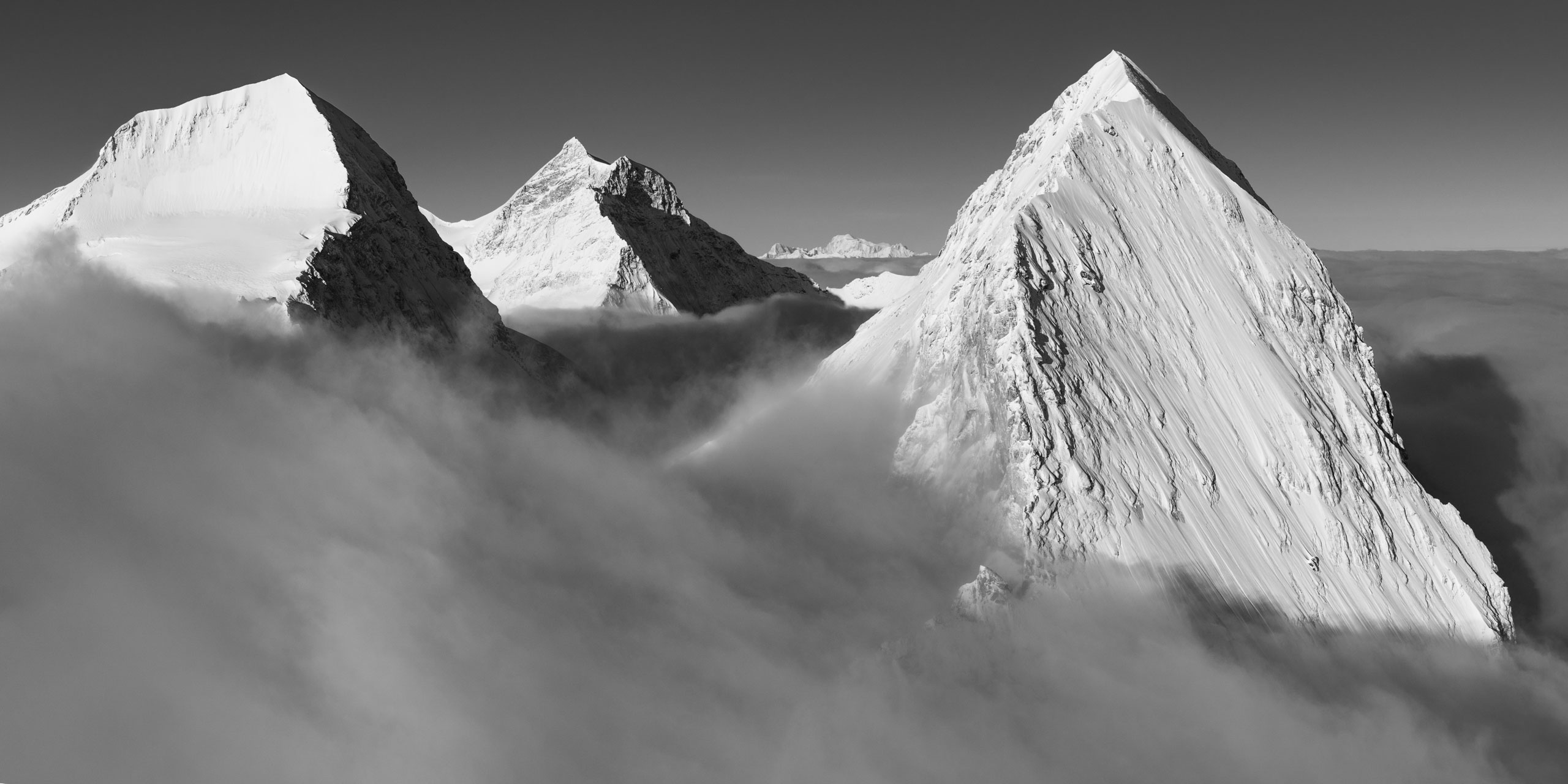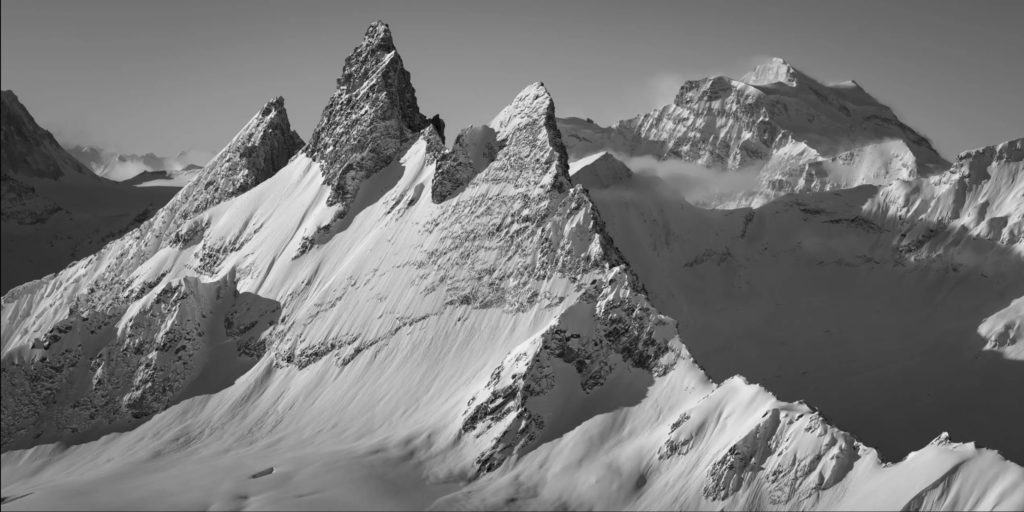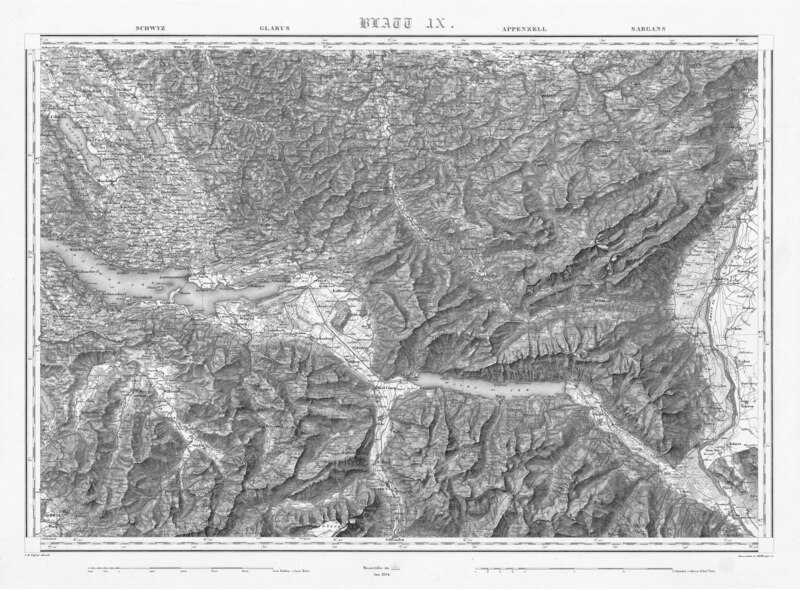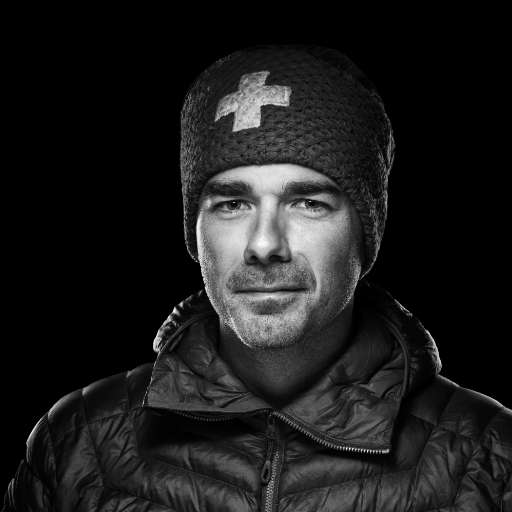InOberland , in the heart of the Swiss Alps, stands a mountain. A rocky pyramid set in glistening ice, the Eiger points skywards. Supported by the grandeur of the Mönch and Jungfrau, it reigns over the Grindelwald valley. But do you know the history of this mythical summit ? Did you know that it transformed itself from a royal sword into a fearsome ogre, the better to combat the vanity of men who dared to tread on the rock of its northern face? This vertical wall, over 1,600 metres high, is one of the three great north faces of the Alps, along with the Matterhorn and Grandes Jorasses. But for all the dramas that have been played out here and the victories that have been won, it is without doubt the most legendary wall in the Alps. I invite you to discover the fascinating and tragic story of the first ascents of the Eiger North Face.
Ascent of the Eiger North Face | Tragic story in the bernese alps
One tragedy followed another on the flanks of the Eiger before man finally succeeded in crossing its relentless, stubborn north face. July 17, 1934, Willy Beck, Kurt and Georg Löwinger, three mountaineers from Saxony, attempt the feat. Two days later, Willy Beck's terrible fall marked the end of their expedition. The Bernese ogre lured the climbers back on August 21, 1935. Karle Mehringer and Max Sedlmayr come from Munich to tackle its north face. They hold on to their dream for five days before disappearing at what is now known as the "Death Bivouac".
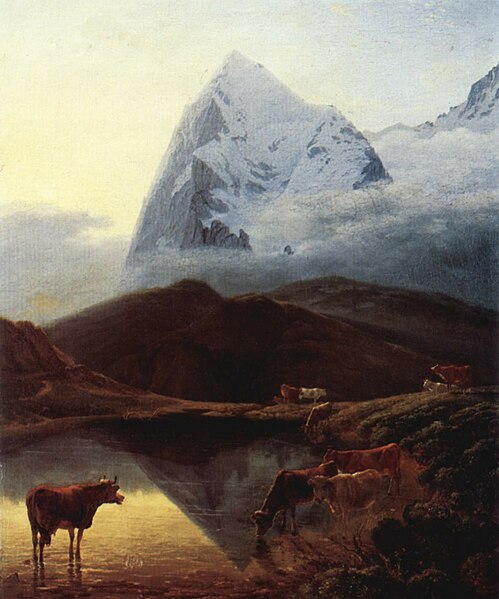
The mountain resisted, but the man persevered, pushing his obsession to the point of madness, as some would say. On July 18, 1936, Toni Kurz, Andreas Hinterstoisser, Edi Rainer and Willy Angerer set out to conquer the north face of the Eiger. From Kleine Scheidegg, observers follow their progress, but the very next day, clouds invade summit, hiding the mountain's misdeeds from the eyes of the world. A rock fall hits Willy Angerer, forcing the climbers back down. But the Eiger plays tricks on their audacity. They were caught in their own trap. When, in the course of their ascent, Andreas Hinterstoisser succeeded in overcoming the thorny passage now known as the "Traversée Hinterstoisser", the climbers withdrew the rope that had ensured their retreat. Not imagining they'd have to turn back.
Now confronted with this impassable passage, they began a descent that would undoubtedly prove fatal. Conditions are poor, and they're getting tired. The damp, icy rock of the Eiger becomes their worst enemy. The team decides to abseil down to the foot of the Eiger, and manages to make contact with rescuers stationed at the Eigerwand railway station. All is not yet lost, and they remain hopeful. But just as Andreas Hinterstoisser detaches himself from the roped party to install the last abseil, an avalanche starts, taking the Bavarian mountaineer with it. Willy Angerer also succumbed to the impact of his fall, and Edi Rainer died of asphyxiation from the weight of the rope crushing his diaphragm. Toni Kurz was the only survivor of the avalanche, clinging to the bodies of his fellow climbers.
Three guides risked everything to come to his rescue, but were unable to reach him. On July 22, after four nights in the clutches of the Eiger, his arm froze. Nevertheless, he managed to cut the rope connecting him to Willy Angerer and clung to the rock face. Unable to reach him, the rescuers tied two ropes together, which he grabbed onto. But, despite his best efforts, he was unable to get the knot linking the two ropes through his carabiner. He struggled on, using every last ounce of strength he had, giving in to the merciless mountain. But to no avail. Exhausted, he resigns himself a few meters from salvation. One of the guides is now so close to him that he can touch his crampons with his ice axe. But he's dying, gradually numbed by the icy cold of the Eiger. With his last breath, he utters the words: "I can't take it anymore. Like all the others, the mountain has got the better of him. And if you'd like to relive the drama, the 2008 film Duel au summit tells the story of the infamous Eiger North Face disaster.
First ascent of the Eiger North Face | A resounding success at summit in the Swiss Alps
In the wake of this tragedy, the canton of Berne is trying to prevent any further ascents. The north face of the Eiger had already claimed the lives of nine climbers, and it was time to put an end to the slaughter. Local guides were released from their duty to rescue any explorers who ventured there. Despite these dissuasive measures, would-be climbers flocked to the foot of the triumphant mountain. And on July 21, 1938, two roped parties set out to conquer its implacable north face: Austrians Fritz Kasparek and Heinrich Harrer on one side, Germans Andreas Heckmair and Ludwig Vörg on the other. The Germans were better equipped, but the Austrians had the advantage of knowing the way back down the western flank of the Eiger. During the ascent, they decided to join forces to conquer the mountain.
The battle is tough and the challenge immense. For three days and three nights, the climbers battle the winds, face the avalanches and outwit the traps of the rock giant. They persevere, whatever the cost. And at 3:30 pm on July 24, they achieved the unthinkable. At an altitude of 3967 metres, exhausted by their expedition, they exult in happiness. The North Face of the Eiger had finally been conquered, and their dream had been transformed from an arrogant pipe dream into a remarkable feat. Fritz Kasparek writes of the ascent: "Half-frozen, exhausted and flayed, we finally reached summit[...] The storm had become even more violent and was blowing head-on. [...] We went back down a few meters to shake hands."
The world immediately seized on their resounding victory. The Swiss press congratulated themselves on a success which, as the inhabitants ofOberland Bern hoped, would put an end to the black list of climbs that had cost the lives of so many mountaineers. At the same time, the German National Socialist regime exploited this achievement as a symbol of the strength of united peoples, just a few months after the annexation of Austria by Germany.
Climbing the Eiger North Face | From firsts to records in the heart of the BerneseOberland
Even if some people avert their eyes from this titanic wall, it still haunts the minds of climbers. A magnetic cliff, the Eiger North Face fascinates the soul as much as it impresses. And on March 6, 1961, four climbers set out to conquer it in the dead of winter. Germans Toni Hiebeler, Anderl Mannhard and Toni Kinshofer, and Austrian Walter Almberger were about to make history. Climbing the mountain as if going back in time, they crossed the famous Traversée Hinterstoisser and stopped not far from the Bivouac de la mort. They climbed over the névé de l'Araignée without suffering any rock falls. Little by little, they made progress, despite the snowy winds and icy rock. At 10:45 am on March 12, they finally reached summit on the Eiger. Seven days of perilous and memorable climbing. The triumphant team has just completed the first winter ascent of the Eiger North Face.
One first followed another, and the Eiger went from being an indomitable, voracious monster to becoming the coveted emblem of the bernese alps. On August 2 and 3, 1963, Swiss climber Michel Darbellay made the first solo ascent of its north face. In March 1966, two teams of climbers decided to tackle this dark wall head-on. The first, Anglo-American, brought together John Harlin, Dougal Haston and Layton Kor, while the second, German, was made up of Jörg Lehne, Gunther Strobel, Robert Votteler, Sigi Hupfauer, Karl Kolikow and Rolf Rozenzopf. The two groups join forces to complete the Eiger directissime. This vertical route, the most direct way to reach summit, later became known as the John Harlin route, after Harlin's rope broke during the expedition.
In 1978, Tsuneo Hasegawa added to his achievements by making the first solo winter ascent of the Eiger North Face. Finally, on March 9, 1992, Catherine Destivelle became the first woman to successfully climb the Eiger North Face solo. Conquered on all sides, the Eiger entered the era of records. Mountaineers are constantly striving to improve their performance. In November 2015, Swiss mountaineer Ueli Steck climbed the Eiger North Face in just 2 hours 22 minutes. Imagine how far we've come in just a few decades! The mountain, uncompromising and gigantic, now lets man tread its rocks.
The three great north faces of the Alps | Victory over the Eiger, Matterhorn and Matterhorn Grandes Jorasses
After the Matterhorn and Grandes Jorasses, the third major north face of the Alps has now been climbed. And the three great Alpine problems forever solved, according to the expression proposed by Fritz Kasparek in 1938, then taken up by Anderl Heckmair in 1949 in his unprecedented project to conquer all three of them, thus completing the ascent of a legendary triptych whose echoes would resonate well into the 21st century The Last Three Problems of the Alps. In the minds of even the most daring mountaineers, the idea of climbing beyond the Alps took shape.
Frenchman Gaston Rébuffat was the first to achieve this feat. In July 1945, he and Édouard Frendo successfully climbed the north spur of Walker's Point on Grandes Jorasses . In June 1949, with Raymond Simond, he climbed the Schmid route to summit of the Matterhorn, and in 1952, with the help of Paul Habran, Guido Magnone, Pierre Leroux and Jean Brunaud, he completed the north face of the Eiger. Not content with triumphing on these three monumental walls, he added the ascent of the Alps' three other most imposing north faces to his list of achievements. Gaston Rébuffat thus pushed back the limits of abrupt nature, conquering the Drus in the Mont Blanc massif, the Piz Badile in the heart of the Bernina and the Cima Grande di Lavaredo, a famous mountain in the Dolomites. And if you'd like to find out more about this mountaineer's exceptional career, I invite you to immerse yourself in his book Étoiles et tempêtes, or in the film of the same name.
A few years later, guide Ivano Ghirardini followed in his footsteps, making the first solo ascent of this alpine trilogy. He went on to complete the first winter ascent of the three great north faces, first as a roped party and then solo, in the winter of 1977-1978. Having made history in his own right, he put the finishing touches to man's first victories on the Alps' most vertiginous north faces.
The story of the first ascents of the Eiger's north face reminds us just how much the mountain is king and nature omnipotent. Eager to be demanding and authentic, she accepts us on her flanks, guiding us to her summit. And from Mont Blanc to Dufourspitze, from the Matterhorn to Piz Bernina, the journey she offers us is a marvellous one. From the edge of heaven to the heart of life.
